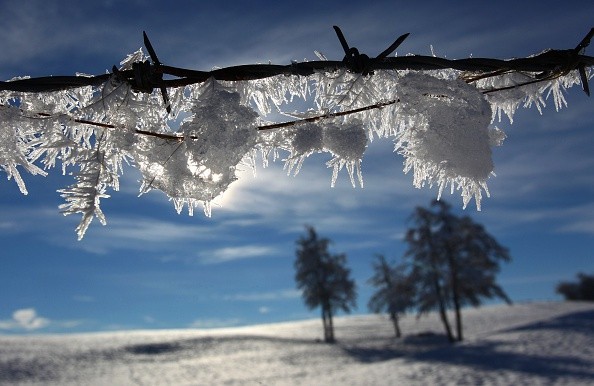Thousands of tiny "ice needles" are responsible for the existence of some of the world's most stunning zen garden layouts. When similar-sized stones clump together across a landscape, they create beautiful patterns ranging from spiral patterns to circles to tidy rows.

Ice Needles
For the first time, new research published in the Proceedings of the National Academy of Sciences on Oct. 5 shows how ice needles generate beautiful stone patterns in varied settings. Ice needles move small rocks to one side as they freeze.
The rocks get concentrated in one region over time, establishing a pattern. According to research by co-author Bernard Hallet, a geologist at the University of Washington, the findings support more than a century of research-based speculation about the relationship between ice needles and stone patterns.
It could also give light to the origins of an even more enigmatic group of patterns discovered on Mars.
When the temperature of damp soil and the temperature of the air are not in balance, ice needles form. Certain forms of dirt "exhale" during the night, contracting in response to the drop in temperature.
Water in the soil is drawn upward by capillary force at the same time, with water molecules adhering to the sidewalls of very thin holes in the earth. However, as the water rises and comes into contact with the cold air, it condenses and freezes into a crystalline needle-like structure.
"They can be quite stunning at times," Hallet told Live Science. "They're also pretty prevalent." If you've ever walked over "crunchy" ground early in the morning you've crushed several ice needles without noticing.
The Study
Scientists have long linked these tiny ice sculptures with the elaborate patterns of lines and swirls that occasionally develop on the pebbly ground, such as the striped landscapes surrounding Hawaii's volcanoes.
What they didn't realize was how ice was able to trace these patterns without the help of any living creature. So they started looking into it.
The researchers used uniformly small, regularly spaced stones to cover a flat 1 by 1 foot (4 meter) area of soil. The patch was then subjected to 30 freeze-thaw cycles, causing ice needles to develop and melt.
The rising and lowering needles pushed the pebbles to one side due to minor environmental imbalances such as the slope of the landscape. It's evident that a pile of stones is heavier than a single pebble, so ice needles can't push them once they've accumulated a large enough concentration.
"The tendency for stones to gravitate into rocky regions is really strong," Hallet explained. On flat ground, stones tend to form loops and swirls, whereas stones on a steep slope tend to form rows.

Patterns on Mars
Experts believe that a more delicate variation of this cycle is responsible for the patterns discovered by NASA's Curiosity rover on Mars.
While the Martian atmosphere is devoid of water, NASA's Kennedy Space Center reports that the Red Planet's soil contains evidence of tiny ice crystals. This dirt expands somewhat as it heats up, then contracts as it cools.
This mechanism is less dramatic than ice needles moving stones aside. It can nonetheless cause small pebbles and dust to shift over time.
On Earth, delicate patterns from such minute soil expansions and contractions can go unnoticed, according to Hallet. On Mars, "we see these features because there's so little going on except for the wind."
For more news, updates about stone patterns and similar topics don't forget to follow Nature World News!
© 2025 NatureWorldNews.com All rights reserved. Do not reproduce without permission.





